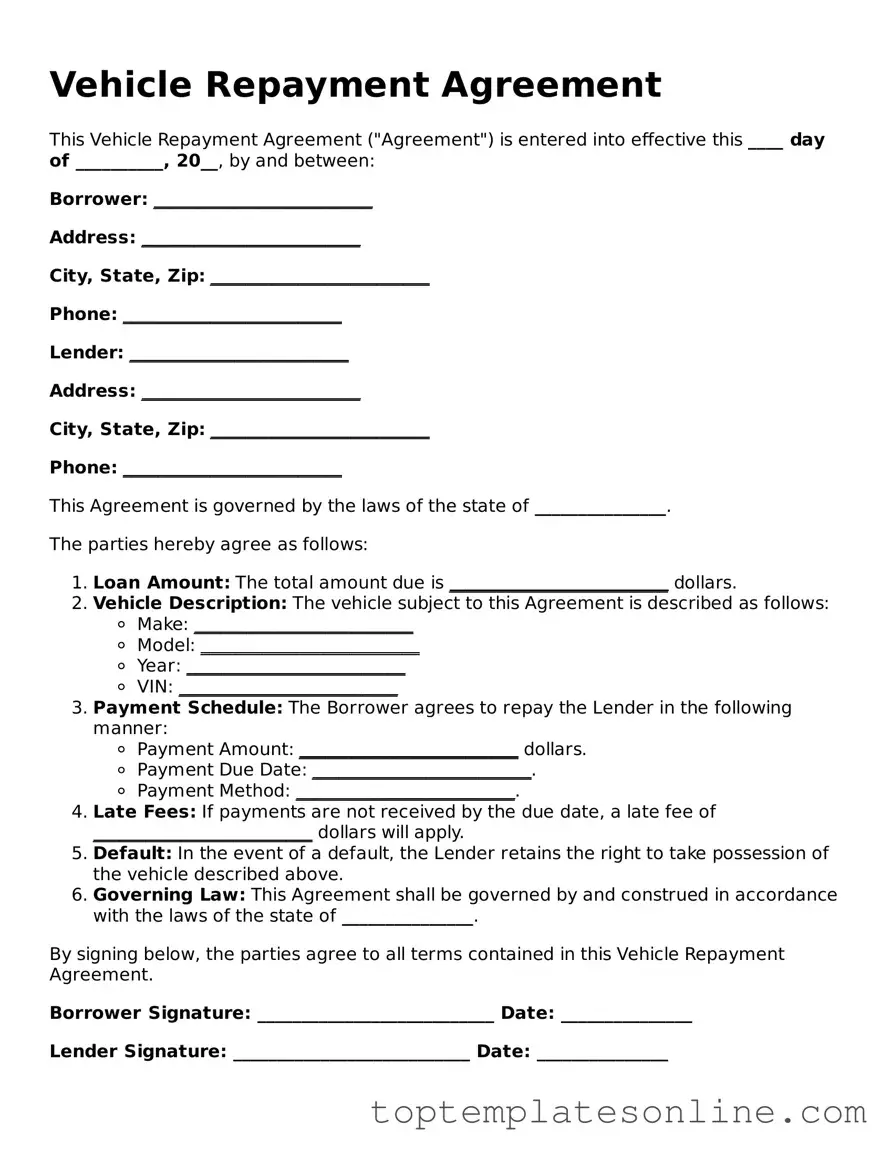Attorney-Approved Vehicle Repayment Agreement Form
The Vehicle Repayment Agreement form is a legal document that outlines the terms under which a borrower agrees to repay a loan used to purchase a vehicle. This agreement protects both the lender and the borrower by clearly defining payment schedules, interest rates, and other essential details. Understanding this form is crucial for anyone involved in financing a vehicle.
Customize Vehicle Repayment Agreement Here
